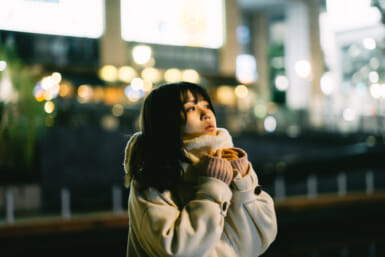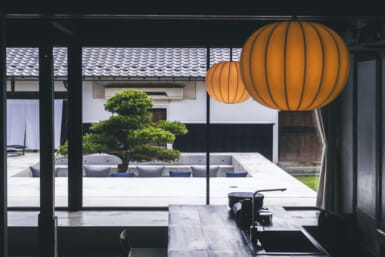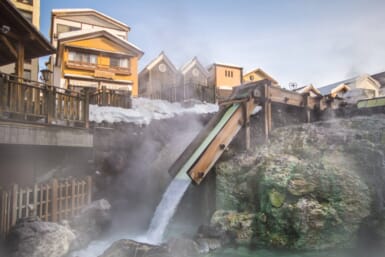by Elyse M. Rogers
SAISEIKAI CENTRAL HOSPITAL
Although it is very Japanese in style and ambience, the Saiseikai Central Hospital (Saiseikai Chuo Byoin) has many fine facilities and is located in an area where many foreigners live. It’s also a friendly place where they try to help if they can. So, in my pursuit of hospitals that might serve the foreign community, I made an appointment through Dr. Toshio Ohnishi M.D., (who is a good friend and head of the Dept. of Itolaryngology at St. Luke’s Hospital) to visit Saiseikai and interview Dr. Kokuichi Iga M.D., who is president (incho) of the hospital.
The first thing I noticed when I walked into the hospital outpatient clinic area is that English-language registration forms are available. Since many of our hospitals in Tokyo that are much more international in scope do not offer such forms, I was very impressed. (It’s such an inexpensive, lasting thing to do, I keep telling hospital administrators.)
But getting around for a non-Japanese speaker/reader is still difficult. Even when speaking in Japanese I had some trouble making them understand that, “No, I was not a patient needing an examination (shinsatsu) but rather a medical writer with an appointment for an interview. After first being ushered into the office of a very nice physician whose name is similar to that of the hospital president, I finally got to the right person.
HOSPITAL HISTORY
Dr. Iga invited Mitsuo Kitahara M.D. to join us during the interview, he told me, because Dr. Kitahara speaks “good English.” Since I’ve interviewed many Japanese “good-English” speakers, sometimes with g-r-e-a-t difficulty, I was praying that Dr. Kitahara would communicate well. Imagine my surprise when I began talking with the young doctor and learned he speaks English like a native American.
I should mention that Dr. Iga does speak some English and understands much of it very well. And I quickly got the sense that he is a very kind, caring man, even though we could not communicate fluently with one another. (Indeed it was interesting when later I mentioned my interview with Dr. Iga to a Japanese physician friend and he instantly backed-up my opinion that Dr. Iga is an unusually fine administrator and caring person.)
But let me talk about Dr.Kitahara for a moment, spent 10 years in the states in a variety of locations — New Jersey, Boston, St. Louis and Utah. And, what is perhaps the most interesting part of his U.S. tour (at least to yours truly) is that time when he was an intern in Newark, New Jersey, and lived in a little town called Kearny. Kearny, folks (I kid you not), is where I was born and grew up. I know the street where Dr. Kitahara lived and the family he lived with. Chisai sekai, ne?”
Anyway, to get back to the hospital history, it was built with ¥1.5 million donated by Emperor Meiji to be a hospital for the poor. The word saiseikai, by the way, means charity hospital. There are still 69 hospitals in Japan with saiseikai in their name. With this particular hospital, it is saiseikai chuo, because it is centrally located.
Since World War II, it has been a general hospital, although there are still charity beds in their adjacent Minsei Hospital, that are set aside for public welfare patients.
Twenty years ago they built the new hospital to replace a three-story wooden structure. I’m always fascinated to know what they did during the building process since the same site is used, and I was told that “we kept a very small hospital of about 10-20 beds, and maintained our outpatient clinic department.”
Patients come mainly from the area around the hospital and nearby areas of Azabu. Shinjuku and Meguro. But, since office buildings are replacing more and more homes in the area, their pediatric department and services are smaller than previously. As an example of a “nearby” new office building, the Mita Kokusai Building (huge building on the corner sort of catty-cornered from Shiba Koen) is right next door. In fact the hospital used to own that site, but sold the land to get funds for the new hospital.
HOSPITAL SPECIALTIES
Although this is a general hospital and covers all areas, certain areas are emphasized (as is true in most hospitals— they all seem lo have their own specialities or larger departments). The emphases here are on internal medicine (they have a large diabetes clinic), cardiology, neurology, vascular surgery (not coronary, though), allergies, dermatology and orthopedics. Since I’m often asked about orthopedic services by readers, some might be interested to know that orthopedic surgeon N. Suzuki speaks English.
They still maintain an obstetric and gynecology department, but for the same reasons that their pediatric patient population is declining, so is the patient census in this department.
EMERGENCY DEPT.
They do have a 24-hour per day emergency department that is always staffed with a physician from the internal medicine department. Other department specialists are on call.
They do have emergency beds available, but will be remodeling so that there will be eight emergency beds plus six intensive care unit beds available.
Anyone can walk into the emergency room at any time, but if they are seriously ill, they can be brought by ambulance. (Since this is one hospital that is an “approved” emergency hospital, the ambulance will often lake patients there, particularly patients from that area.)
Parking is a problem during the day, but for nighttime emergencies you could certainly drive, since their 30-odd parking places are empty then; during clinic hours the parking is “very full.”
Foreigners are welcome to use the service, but both Dr. Iga and Dr. Kitahara suggest that a foreign patient “bring an interpreter with them at night.”
REMODELING PLANS
Saiseikai plans to extensively remodel, starting this year. They will add 32 new beds in the process, mainly for coronary surgery and thoracic surgery. As you may know, the rules governing new hospital beds are becoming very strict. In fact, since July, 1988, bed expansion has been allowed. (The restriction depends on the urea, etc, but it is a very strict new rule that will definitely affect hospital expansion.)
The expansion/remodeling costs are estimated at ¥2-3 billion. One of the reasons the expansion part can be handled so reasonably (in expensive Tokyo) is because the present hospital structure is nine stories, but the top two floors were never used as part of the hospital. Until recently, they were used as nurses dormitories; however, they now house their nurses in various apartments around the hospital area and arc free to use the eighth and ninth floors for hospital beds and services. At the same time they plan to expand the clinic and laboratory and also enlarge their present School of Nursing.
Along with remodeling. I should mention that among any new “plans or goals” Dr. Iga and staff want to “expand service to the foreign community.” They feel they need to work on several problems which include: Western food service and an English-speaking nursing staff. As a first step, nurses are encouraged to attend English-language classes and one half of the tuition will be paid by the hospital.
To expand their physician English-speaking staff, they have sent a physician to the U.S. (he’s in Seattle), with money from the hospital fund, and they hope to make this program a continuing one. Not only English-speakers, but “more Western type of medicine orientation” is another aspect of the serving-foreigners program.
I was very impressed and heartened by these goals, but couldn’t resist a plug for English-language signs. As I explained to Dr. Iga, the signs are easy to produce, inexpensive and almost permanent (so don’t need costly replacement). Also, English language or romaji signs help the Japanese people too, since even many native Japanese cannot read the difficult medical terminology in kanji either.
PRESENT HOSPITAL
Saiseikai Hospital is a cheery, friendly place, from the moment you walk in the door. And Dr. Kitahara, as he took me around to tour the hospital facilities, told me that Dr. Iga and the entire staff pride themselves on their helpful, friendly attitude. It shows. Even the seriously ill patients appear relaxed and comfortable.
The hospital size is currently 500 beds and has a staff of 80 doctors and nurses. They have a “close association” with Keio University, and indeed both Dr. Iga and Dr. Kitahara are Keio graduates. About 14 residents are in their one- and two-year residency programs.
There are basically two floors to the outpatient clinic, which is an active one. Clinic hours are open in the morning, and in afternoon by appointment only. The clinic wait during the morning hours is significant — probably the usual two-three hours. But if the patient needs a specialist, the appointment system is used and the wait is only 15 minutes or so. Just as I was leaving (in the afternoon) a foreign patient had just arrived for an appointment with Dr. Kitahara.
Outpatient costs are about one-and-a-half times the normal patient cost if you do not have Japanese medical insurance and all must be paid by the patient. They will fill out forms or give detailed receipts if you ask.
Saiseikai Central Hospital is located in Mita, not far from the Azabu Juban. A plethora of buses pass close by—if you can believe it, numbers 98, 10, 85, 96, 92 and 70. If you can’t find one that’s convenient for you, I have to believe you’re not really trying. By train or subway it’s a bit harder. Kamiyacho on the Hibiya Subway Line and Shiba Koen on the Toei Line are both a bit of a hike. See the map at left for more details.
Saiseikai Central Hospital, 1-4-17 Mita, Minato-ku, Tokyo 108, Phone 451-8211, www.saichu.jp.








